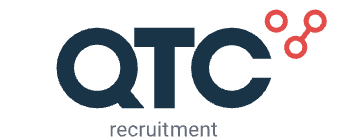Written by Nasma - 5 Minutes reading time
How businesses can leverage digital technology to address staffing needs

Limited bandwidth translates to limited resources. Across all industries, business professionals constantly assess how to best distribute their assets to maintain growth. One of the most important of these assets is the organization’s workforce — the people employed by the company.
Many companies currently face significant workforce management challenges. These organizations are all looking for the answer to the same question: How can we allocate our resources most efficiently? This is a multifaceted challenge that requires access to detailed insights regarding daily operations and consumer behavior. Fortunately, the latest digital technology can help business leaders make informed, data-driven recruiting and staffing decisions that will improve both the employee and customer experience.
Addressing Staffing Needs in the Digital Age
As many organizations deal with staffing shortages and limited resources, workforce management continues to be a common pain point. Every organizational level struggles with specific difficulties exacerbated by staffing demands. For example, at the local level, store managers face the challenge of keeping team members engaged but avoiding overwhelming them with tasks. Personnel at the regional level must distribute staff appropriately across multiple locations to account for busy periods. And at the C-suite level, executives constantly search for ways to increase productivity and track growth.
To adequately address these and other widespread staffing needs, businesses require a reliable method for honing in on the metrics necessary to reveal gaps in their strategy. This information can include insights as to where more training is needed versus more employees or how many employees can take PTO at a given time.
Additionally, historical data can identify peak business hours, days or seasons to help guide staffing decisions. Managers and supervisors can leverage regular shifts in traffic to determine these needs as they change and forecast more accurately for the future. Moreover, organizations can gain better visibility into customer flow by understanding metrics such as the amount of customers per service type, or service types requested by day of the week, or by time of day.
If a business experiences few slow periods or a constant flow of traffic, digital queuing technology facilitates productive cross-training so no responsibility or access rests on one staff member. This capability helps lessen the impact of absence on overall operations as well as each individual employee.
Benefits of Digital Technology for Staffing Purposes
Modern queue management systems achieve more than seamless customer flow management. Another useful capability of this software is the helping hand it offers, particularly for service centers and retailers. By providing staff members with the resources necessary to efficiently serve and engage guests, these digital tools enable personalized interactions, improving the experience for both customers and employees. A few more staffing benefits of virtual queuing technology include its ability to:
1. Manage Schedules With Ease
For industries with high or fluctuating demand (e.g., retail, banking, telecom or government agencies), digital software makes managing break schedules easier because it helps augment lunch periods. By informing staff members of when to expect customers, this technology helps managers optimize work schedules by strategically planning breaks and time off.
2. Better Allocate Personnel
Organizations such as banks or other financial institutions with multiple locations often struggle to adequately distribute staff, especially when every branch is requesting more personnel. Virtual queuing software collects and aggregates the data points necessary to inform leadership of staffing needs by location. With this insight, they can clearly see patterns in customer flow by leveraging real-time data, allowing for quick and accurate decision-making.
3. Standardize and Quantify Performance
Having access to objective, quantitative data points gives leadership teams the ability to set performance standards for their employees. This transparency means they can pinpoint knowledge gaps in training or onboarding procedures and simplify performance reviews. Posting performance data in the breakroom, for example, allows each employee to understand how their skills measure up and which ones they need to focus on strengthening.
Leveraging Data to Improve Productivity
One industry that can greatly benefit from virtual queuing applications is the public sector. For example, a busy government agency with high demand and even higher performance standards set its service time standard at 10 minutes. This meant that no service the agency offers should take longer than the predetermined time limit. Data reports identified one service that was chronically taking longer than the standard limit: a specialized service reserved for veterans that only one staff member was trained to address. Access to this crucial data provided the insight management needed to request additional resources and reduce service times.
Leaders at every level can also use the data gathered from this technology to boost employee morale by celebrating accomplishments, consequently improving the value of annual performance reviews. Measuring and tracking performance with objective data allows organizations to identify areas for improvement, as well as recognize and reward outstanding efforts
Moreover, data visualization allows individual workers to see and acknowledge their contributions to the company as a whole, illustrating (and thus reinforcing) their value to the overall organization. All of these capabilities help to promote a positive and engaging company culture that prioritizes employee welfare and development.
Versatile Technology for Evolving Staffing Needs
In the digital age, businesses need a system that can account for ever-changing trends and fluctuations in demand. Modern queuing technology uses data to make a productive difference, both for employees at every level and for the customer.
This invaluable data provides objective truths for better optimization efforts and better feedback. Historical data can be used to develop benchmarks and make predictions for the future, as well as track and compare performance over time and between locations. By using state-of-the-art digital technology to determine staffing needs, businesses can create a supportive environment for everyone, from prospective hires to repeat clients.
Steve Covate
Are you prepared to secure top talent in the competitive Life Science Industry? Tackle workforce challenges by strategically allocating resources and using data-driven decisions to optimise staffing, elevate the employee and customer experience. Transform your strategy and embrace digital innovation. QTC Recruitment specialises in identifying skilled individuals to move your organisation to success in the dynamic Life Science Industry. Discover more about how we can accommodate and leverage cutting-edge technology to elevate the recruitment process. See how our digital solutions can enhance efficiency, streamline candidate selection, and seamlessly connect for a transformative experience. Learn more about how we can assist here.
Also published on Recruitingdaily.com
Want to stay informed about current Life Science and recruitment news on a regular base? Then register here for free.
